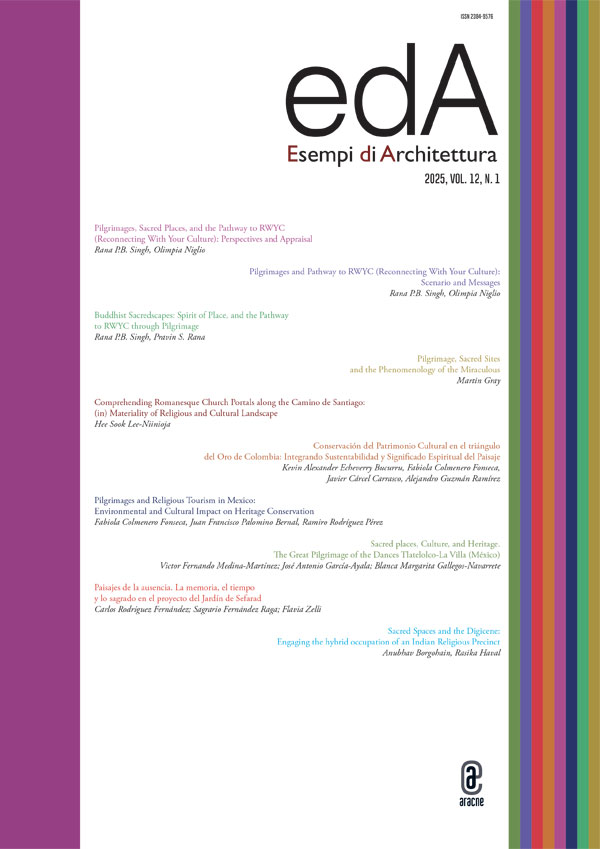Estratto dal volume Esempi di Architettura
Buddhist Sacredscapes: Spirit of Place, and the Pathway to RWYC Through Pilgrimage
DOI: 10.53136/97912218171953
Pagine: 45-68
Data di pubblicazione: Febbraio 2025
Editore: Aracne
SSD:
ICAR/14 ICAR/18 ICAR/20 ICAR/21
The notion of pilgrimage in Buddhism is intrinsic. It inspires us to connect closer with enlightened Nature once the Buddha has passed his time or given sermons. Over time, some sacred items (ashes) of the Buddha were manifested there. Following up, monks received the revelation that encouraged the Buddhist kings to establish commemorative monuments, monasteries, or shines. The Buddha himself established the idea of sacred places by experiencing the spirit of cultural landscapes of the four places directly associated with his life, where one may realise, envision, and get revealed by visiting the wilderness, visioning the landscape aesthetics, communicating with the spirit of Nature, and ultimately having more profound feeling for understanding the interrelatedness of human consciousness and serenity of divine Nature. They are Lumbini (birthplace), Bodh Gaya (attained enlightenment), Sarnath (the First Sermon), and Kushinagar (Mahāparinibbāna). By the time of King Ashoka (r. 270-232 BCE), four more places were added to the list, viz. Sravasthi, Sankisa, Rajagir, and Vaishali are those closely associated with the Buddha and his principal miracles. Over time, a four-tier hierarchy of the Buddhist places of pilgrimages emerged. All such places maintain reciprocity of local to universal interaction or inter-personal relations in different contexts and at varying degrees, which well suited the ‘Middle Path’ of Buddhism that refers to ‘the Middle way between devotion to the pleasures of the senses and self-mortification’ on the path of two great pillars, viz: Mahāprajñā (‘Great Wisdom’) and Mahākaruṇā (‘Great Compassion’). These perspectives shape pilgrimage tourism to Buddhist places, where visitors transform themselves from realisation (anubhava) to revelation (anubhūti); this is befitting of the vision and action of RWYC.


